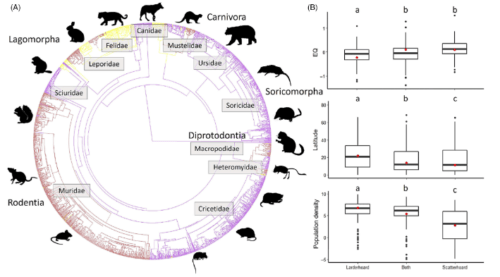2024-06-18 カロリンスカ研究所(KI)
<関連情報>
- https://news.ki.se/perineal-cut-reduces-the-risk-of-serious-birth-injury
- https://www.bmj.com/content/385/bmj-2023-079014
無産婦の真空補助分娩における外側会陰切開または会陰切開なし(EVA):多施設、オープンラベル、無作為化比較試験 Lateral episiotomy or no episiotomy in vacuum assisted delivery in nulliparous women (EVA): multicentre, open label, randomised controlled trial
Sandra Bergendahl, senior consultant in obstetrics and gynaecology ;Maria Jonsson, professor in obstetrics and gynaecology ;Susanne Hesselman, associate professor in obstetrics and gynaecology ;Victoria Ankarcrona, senior consultant in obstetrics and gynaecology ;Åsa Leijonhufvud, senior consultant in obstetrics and gynaecology ;Anna-Carin Wihlbäck, senior consultant in obstetrics and gynecology ;Tove Wallström, senior consultant in obstetrics and gynaecology ;Emmie Rydström, consultant in obstetrics and gynaecology ;Hanna Friberg, senior consultant in obstetrics and gynaecology ;Helena Kopp Kallner, associate professor, senior lecturer in obstetrics and gynaecology ;Sophia Brismar Wendel, associate professor, senior lecturer in obstetrics and gynaecology
The BMJ Published: 17 June 2024
DOI:https://doi.org/10.1136/bmj-2023-079014

Abstract
Objective To assess the effect of lateral episiotomy, compared with no episiotomy, on obstetric anal sphincter injury in nulliparous women requiring vacuum extraction.
Design A multicentre, open label, randomised controlled trial.
Setting Eight hospitals in Sweden, 2017-23.
Participants 717 nulliparous women with a single live fetus of 34 gestational weeks or more, requiring vacuum extraction were randomly assigned (1:1) to lateral episiotomy or no episiotomy using sealed opaque envelopes. Randomisation was stratified by study site.
Intervention A standardised lateral episiotomy was performed during the vacuum extraction, at crowning of the fetal head, starting 1-3 cm from the posterior fourchette, at a 60° (45-80°) angle from the midline, and 4 cm (3-5 cm) long. The comparison was no episiotomy unless considered indispensable.
Main outcome measures The primary outcome of the episiotomy in vacuum assisted delivery (EVA) trial was obstetric anal sphincter injury, clinically diagnosed by combined visual inspection and digital rectal and vaginal examination. The primary analysis used a modified intention-to-treat population that included all consenting women with attempted or successful vacuum extraction. As a result of an interim analysis at significance level P<0.01, the primary endpoint was tested at 4% significance level with accompanying 96% confidence interval (CI).
Results From 1 July 2017 to 15 February 2023, 717 women were randomly assigned: 354 (49%) to lateral episiotomy and 363 (51%) to no episiotomy. Before vacuum extraction attempt, one woman withdrew consent and 14 had a spontaneous birth, leaving 702 for the primary analysis. In the intervention group, 21 (6%) of 344 women sustained obstetric anal sphincter injury, compared with 47 (13%) of 358 women in the comparison group (P=0.002). The risk difference was -7.0% (96% CI -11.7% to -2.5%). The risk ratio adjusted for site was 0.47 (96% CI 0.23 to 0.97) and unadjusted risk ratio was 0.46 (0.28 to 0.78). No significant differences were noted between groups in postpartum pain, blood loss, neonatal outcomes, or total adverse events, but the intervention group had more wound infections and dehiscence.
Conclusions Lateral episiotomy can be recommended for nulliparous women requiring vacuum extraction to significantly reduce the risk of obstetric anal sphincter injury.
Trial registration ClinicalTrials.gov NCT02643108.


